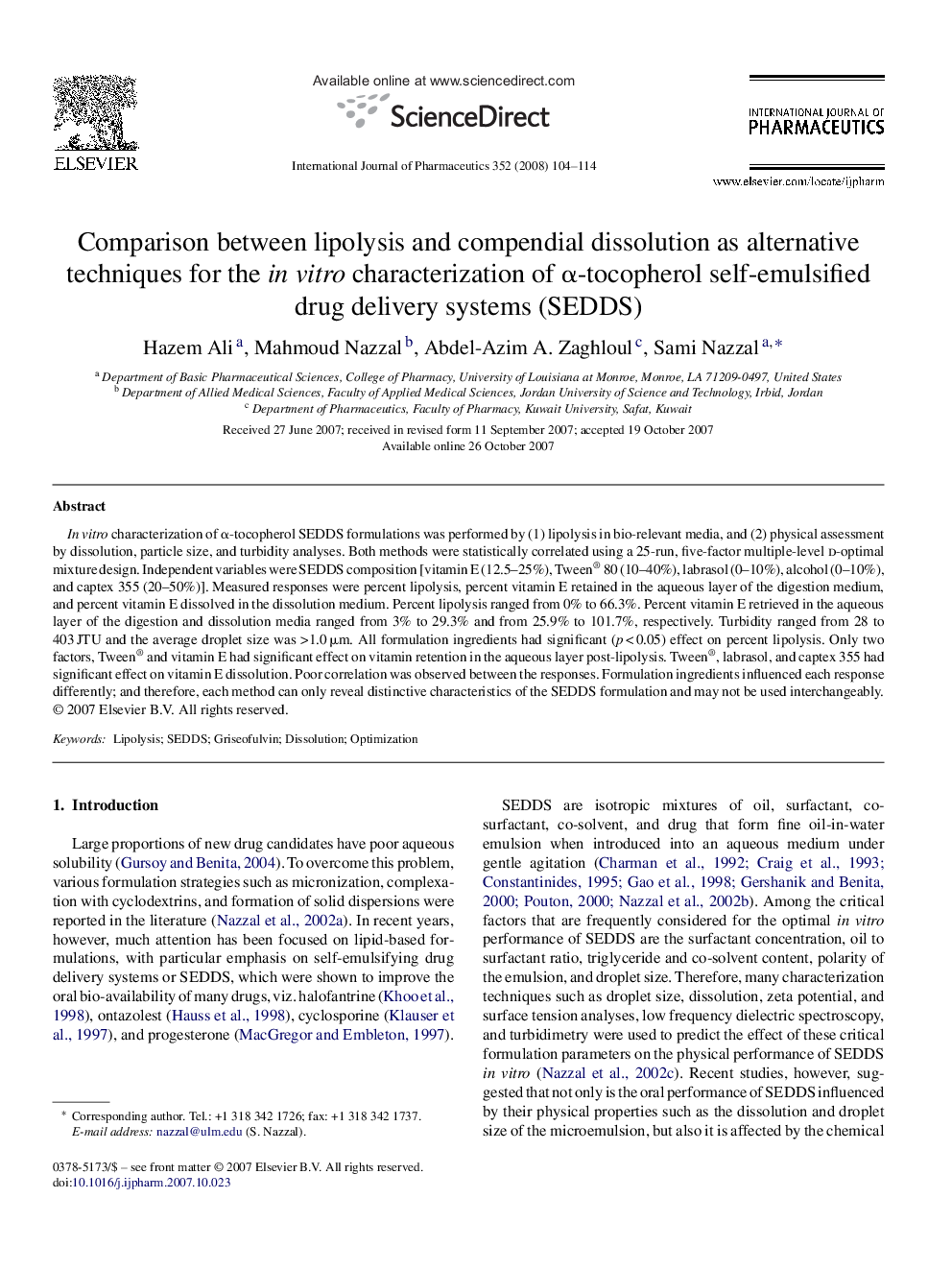| Article ID | Journal | Published Year | Pages | File Type |
|---|---|---|---|---|
| 2505485 | International Journal of Pharmaceutics | 2008 | 11 Pages |
In vitro characterization of α-tocopherol SEDDS formulations was performed by (1) lipolysis in bio-relevant media, and (2) physical assessment by dissolution, particle size, and turbidity analyses. Both methods were statistically correlated using a 25-run, five-factor multiple-level d-optimal mixture design. Independent variables were SEDDS composition [vitamin E (12.5–25%), Tween® 80 (10–40%), labrasol (0–10%), alcohol (0–10%), and captex 355 (20–50%)]. Measured responses were percent lipolysis, percent vitamin E retained in the aqueous layer of the digestion medium, and percent vitamin E dissolved in the dissolution medium. Percent lipolysis ranged from 0% to 66.3%. Percent vitamin E retrieved in the aqueous layer of the digestion and dissolution media ranged from 3% to 29.3% and from 25.9% to 101.7%, respectively. Turbidity ranged from 28 to 403 JTU and the average droplet size was >1.0 μm. All formulation ingredients had significant (p < 0.05) effect on percent lipolysis. Only two factors, Tween® and vitamin E had significant effect on vitamin retention in the aqueous layer post-lipolysis. Tween®, labrasol, and captex 355 had significant effect on vitamin E dissolution. Poor correlation was observed between the responses. Formulation ingredients influenced each response differently; and therefore, each method can only reveal distinctive characteristics of the SEDDS formulation and may not be used interchangeably.
